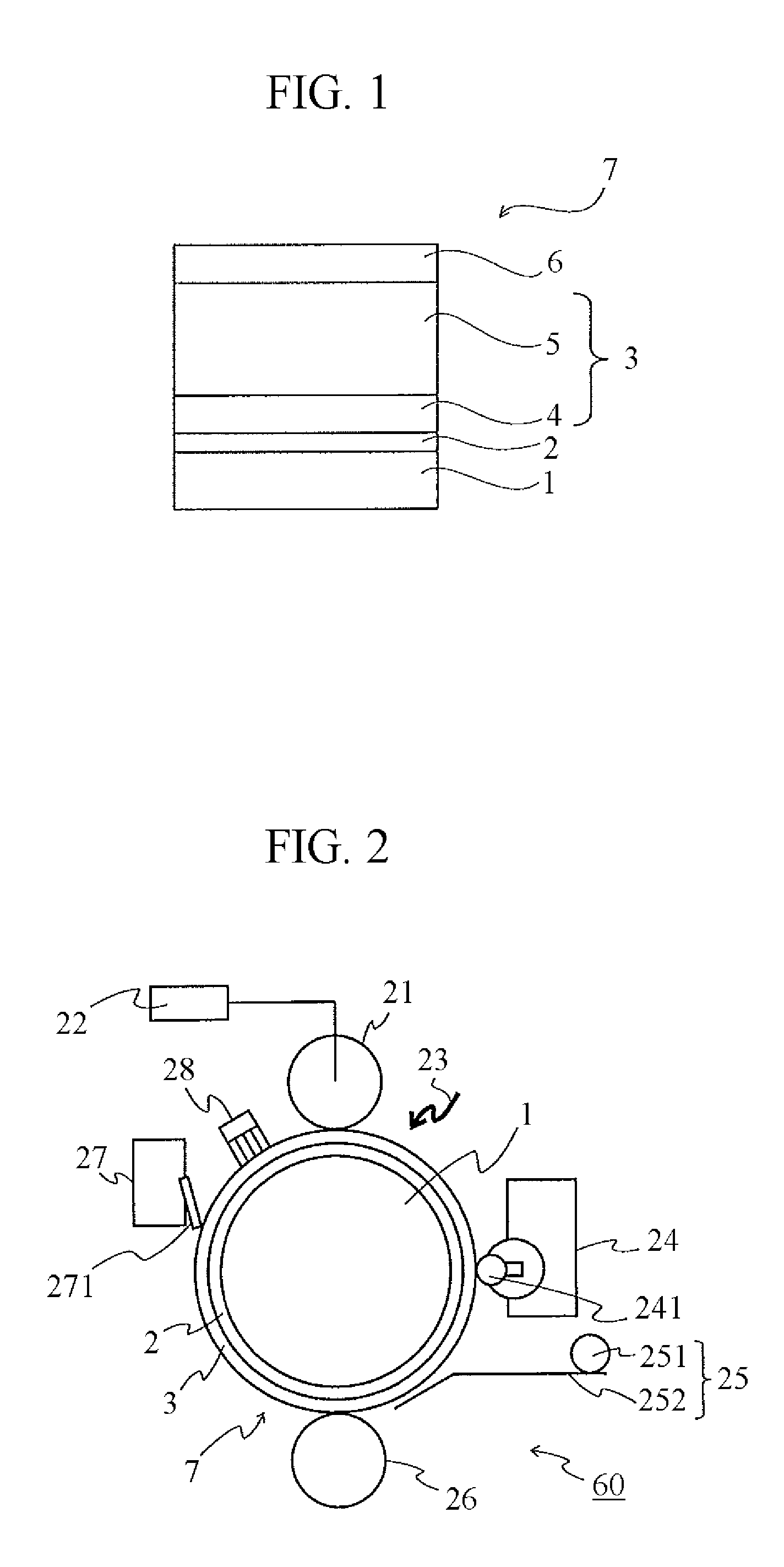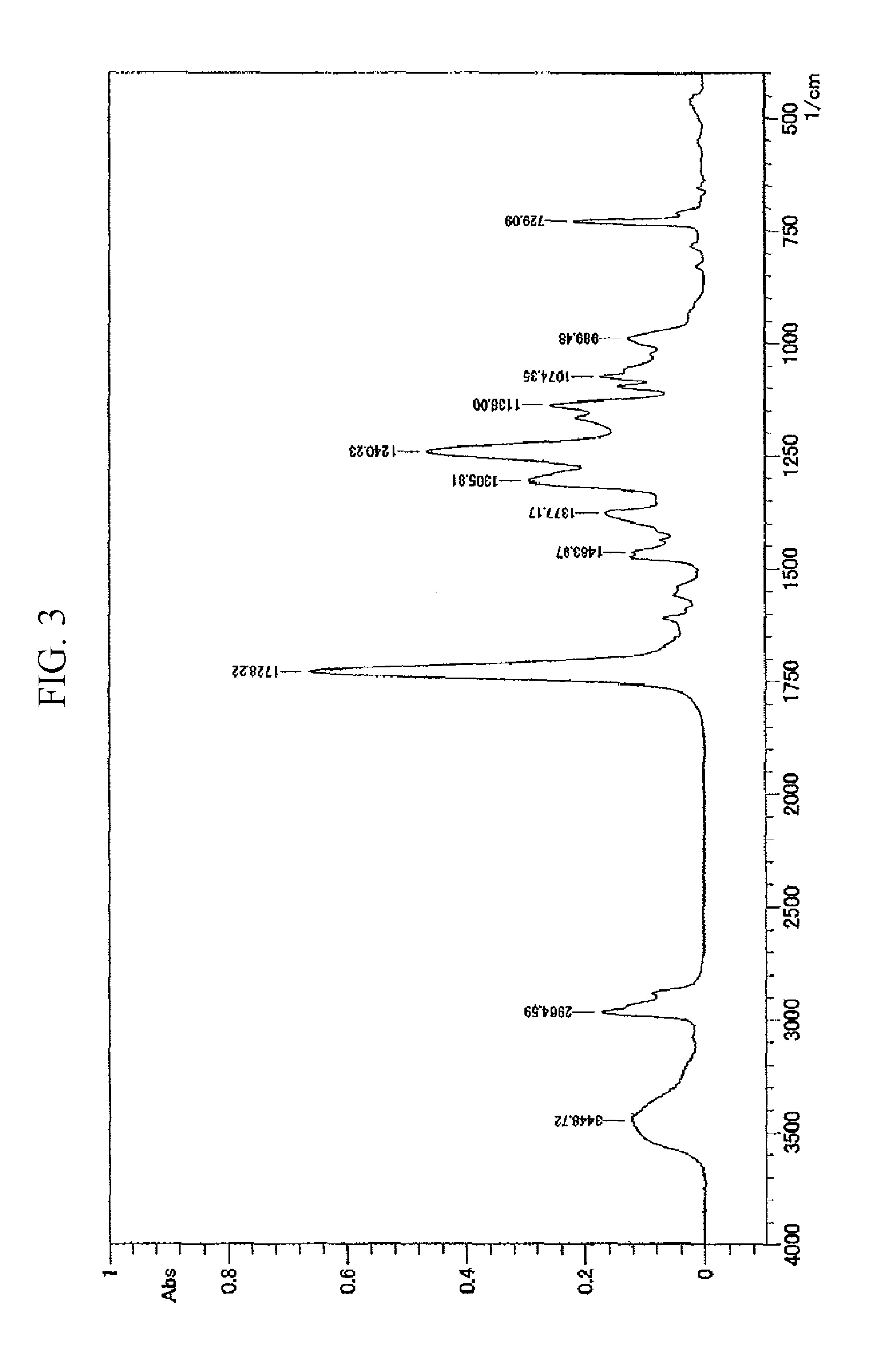Electrophotographic photoreceptor, process for producing the electrophotographic photoreceptor, and electrophotographic device
a photoreceptor and electrophotography technology, applied in the field of electrophotographic photoreceptors, process for producing electrophotographic photoreceptors, electrophotographic devices, etc., can solve the problems of difficult simultaneous attainment of electric potential characteristics, difficult to form a photosensitive layer having durability, and increase in transfer current, so as to achieve the effect of not easily generating printing defects, image defects, and electric potential characteristics
- Summary
- Abstract
- Description
- Claims
- Application Information
AI Technical Summary
Benefits of technology
Problems solved by technology
Method used
Image
Examples
example 1
Preparation of Copolymer Resin
[0076]31 mol % of isophthalic acid, 19 mol % of adipic acid, 29 mol % of neopentyl glycol, 14 mol % of trimethylolpropane, and 7 mol % of benzoguanamine were mixed to obtain a total amount of 150 g in a 300-mL four-necked flask. The temperature was raised to 130° C. while nitrogen was blown into the reaction system. After the reaction system was maintained for one hour, the temperature was raised to 200° C., and the reaction of polymerization was further carried out to obtain a resin. The IR spectrum of the resin thus obtained is presented in FIG. 3. Also, the 1H-NMR spectrum of the resin thus obtained is presented in FIG. 4.
[0077]Undercoat Layer:
[0078]100 parts by mass of a total resin liquid which was prepared by mixing the resin thus obtained and a melamine resin (Uvan 2021 resin liquid, manufactured by Mitsui Chemicals, Inc.) at a mixing ratio of 4:1, was dissolved in a solvent composed of 2000 parts by mass of methyl ethyl ketone. 400 parts by mass...
example 2
[0085]28 mol % of isophthalic acid, 20.5 mol % of adipic acid, 32 mol % of neopentyl glycol, 15.5 mol % of trimethylolpropane, and 4 mol % of benzoguanamine were mixed, and the mixture was polymerized under heating to obtain a resin. The resin thus obtained was used in the same manner as in Example 1 to prepare a coating liquid for undercoat layer, and thus a photoreceptor 7 was produced.
example 3
[0086]32 mol % of isophthalic acid, 20 mol % of adipic acid, 27.9 mol % of neopentyl glycol, 19.1 mol % of trimethylolpropane, and 1 mol % of benzoguanamine were mixed, and the mixture was polymerized under heating to obtain a resin. The resin thus obtained was used in the same manner as in Example 1 to prepare a coating liquid for undercoat layer, and thus a photoreceptor 7 was produced.
PUM
| Property | Measurement | Unit |
|---|---|---|
| electroconductive | aaaaa | aaaaa |
| photosensitive | aaaaa | aaaaa |
| particle size | aaaaa | aaaaa |
Abstract
Description
Claims
Application Information
 Login to View More
Login to View More - R&D
- Intellectual Property
- Life Sciences
- Materials
- Tech Scout
- Unparalleled Data Quality
- Higher Quality Content
- 60% Fewer Hallucinations
Browse by: Latest US Patents, China's latest patents, Technical Efficacy Thesaurus, Application Domain, Technology Topic, Popular Technical Reports.
© 2025 PatSnap. All rights reserved.Legal|Privacy policy|Modern Slavery Act Transparency Statement|Sitemap|About US| Contact US: help@patsnap.com



